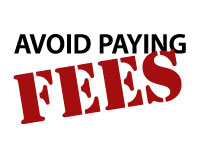In our society, it's expected that you tip when you receive service from different providers. While it can be difficult sometimes to figure out when to tip (the carpet layers? what about the guy driving the airport shuttle?), it's pretty well accepted that you tip when you visit the salon, and when you eat out.
But how do you figure your tips?
According to CouponCabin.com, the way that people figure their tips is changing.
Original Price vs. Discounted Price
Many of us are much savvier shoppers than we were prior to the financial crisis and recession. We use daily deal sites and clip coupons. Even those who aren't penny pinchers might be willing to take advantage of a good deal on a manicure, or use a two-for-one entree coupon at a restaurant.
But when it comes to tipping, what do you do? Should you leave a tip on the original price of the service? Or tip on the discounted amount. The CouponCabin.com survey says that 26% of adults in the United States leave a tip on the discounted price.
That means that, for the most part, Americans are still mostly tipping on the original price of the service. This is good news, at least in terms of etiquette, since that's what we're supposed to be doing. Even though you are enjoying a discount, the probably-underpaid service provider is still working just as hard.
It's important to remember that — especially when it comes to food service — service providers aren't being paid very much. During college, I worked as a waitress. I made $2.15 an hour. I hustled and smiled and gave the best service I could, since my tips were my livelihood. And sometimes, even when I was awesome, I was still stiffed on the tip. And I always dreaded the coupon, since I'm pretty sure that a large chunk of that percentage of people who tip based on the discounted price live in my state.
What about Tip Jars?
While I do put a little tip in the jar when I see one on the counter, this is something that many people are a little more conflicted about. Most of the people working behind the counter at Twizlberry or the local coffee shop are, in fact, at least making minimum wage. And did they really have to do much on your behalf? They keep the toppings stocked, and make your coffee. They aren't actually coming to your table, bringing you what you need, and seeing to your enjoyment during the meal.
But, I still leave a tip — and so do many other Americans. The CouponCabin.com survey indicates that 59% of adults leave extra change (or even place a real tip) in the jar at least some of the time. At the very least, the lesson businesses can learn is that a tip jar can be a reasonable revenue stream.
What do you think about tipping? Do you think it's a good idea to leave tips? How do you figure how much you will leave?
 One of the ways that you can avoid ATM fees is to look for a bank that doesn't charge you for using the ATM. At the very least, your bank shouldn't charge you when you use one of its own machines. There are also financial institutions that will reimburse you for fees you incur at other banks' ATMs. But if you don't want to switch banks, and you are tired of trying to find the “right” ATM because you aren't reimbursed, you can follow another path.
One of the ways that you can avoid ATM fees is to look for a bank that doesn't charge you for using the ATM. At the very least, your bank shouldn't charge you when you use one of its own machines. There are also financial institutions that will reimburse you for fees you incur at other banks' ATMs. But if you don't want to switch banks, and you are tired of trying to find the “right” ATM because you aren't reimbursed, you can follow another path.
